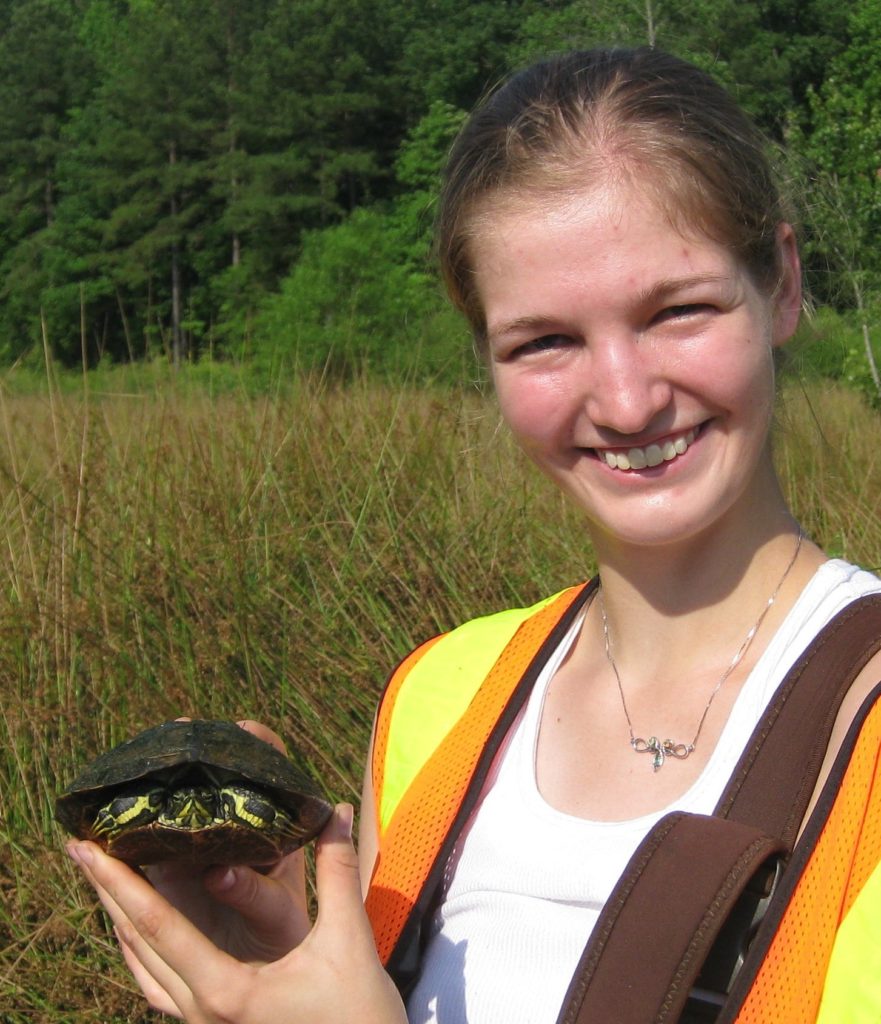
M. Env. Sci., Duke University
Conference Travel Grant Type 2 (Society of Wetland Scientists)
The effect of stream restoration on turtle species assemblages in the Piedmont of North Carolina, USA
“In response to the negative impact of increasing urban and agricultural development on aquatic systems, restoration efforts often attempt to return degraded streams to their natural ecosystem structure and function. Yet few attempts have been made to monitor the effectiveness of restored streams in supporting certain important groups of organisms found in native ecosystems, such as freshwater turtles. The purpose of this study was to compare turtle species assemblages in natural and restored streams in the North Carolina piedmont, and describe habitat characteristics that might drive potential differences. Comparisons of turtle assemblages were made between six restored and six natural streams found in five counties. Three baited hoop nets were set at each location to collect turtle population data, for a total of 36 trap nights from mid-May to late July. Stream habitat was characterized by water quality analyses, structural measurements of stream (width, depth, etc.) and floodplain vegetation surveys. At the natural sites, a total of 24 turtles were captured representing five species, while a total of 53 turtles were captured at the restored sites, representing seven species (all p-values >0.05). Analyses of habitat characteristics indicate that natural and restored streams differ in channel structure and vegetation. This is one of the first studies to address the possible impact of stream restoration on turtle assemblages, and the findings suggest that natural and restored streams may not be ecologically equivalent for turtles.“
Ms. Nowalk’s paper won the “Best Student Oral Presentation” award, which was announced at the 2011 SWS Meeting in Prague, The Czech Republic.
